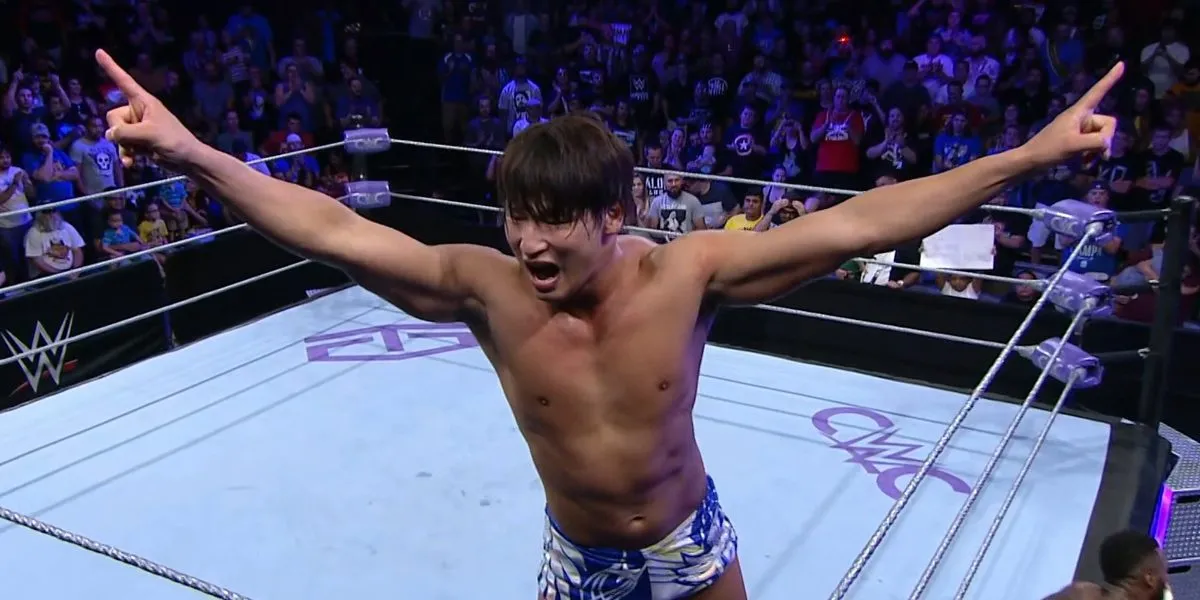Professional wrestling, like other combat sports such as boxing and MMA, is synonymous with having title belts for its champions. Their importance is paramount; theoretically, they indicate who the best wrestlers in a promotion are, and who are the biggest stars. A title bout, if booked properly and with credible stars, can be a big selling point for a wrestling event. Therefore, for most promotions, titles are treated with respect and importance.
To stress this importance, the look of a title belt must reflect that it is representative of a champion. Sounds obvious, but over the years wrestling fans have argued over the attractiveness and appropriateness of title belts with a surprising amount of passion. Ugly belts, or belts that do not look like a symbol of a champion, will receive countless characters of derision on social media, while the great belts are debated back and forth on their merits and order in the pecking order of great titles.
Here are some of my favorite wrestling title belts and what they mean to me as a fan.
Big Gold Belt
Perhaps the most famous wrestling belt of all time, the ‘Big Gold Belt’ as it is affectionately known represents my ideal aesthetic vision of what a major championship belt should look like. It just radiates greatness and as such does a perfect job as a symbol of excellence.
Originally commissioned by Jim Crockett Jr of Jim Crockett Promotions in 1985 to replace the previous NWA World Heavyweight Title belt, it made its debut at a cross-promotional event called ‘Battle of the Belts II,’ where champion Ric Flair defended Barry Windham in one of the all-time great matches, a contest worthy of the gold being competed for.
What makes the belt so perfect for a major heavyweight title is its size and detail. It is substantially bigger than a standard title belt, which lends it a sense of importance—grandness even. And because the detailing on it is so intricate, all in shiny, polished gold and jewels, there is a sense of regal-ness to the piece, a crown jewel of the wrestling world.
The Big Gold Belt has a complicated history as dramatic as any wrestling storyline. For example, in 1991 WCW was still a part of the NWA. Ric Flair had left the company under bad terms when he was still champion. Simple enough to solve; vacate the title and find a new champion. The problem was, the NWA champion had to put down a deposit of 25,000 dollars in case anything happened to the belt. As the deposit wasn’t returned to him, Flair took the belt. And when Flair appeared on WWE TV and the belt was with him, a very frantic phone call was made to the lawyers…
Simply put, this is the gold standard of wrestling belts. Accept no imitations!
WWF Intercontinental Title Belt
Back in the 80s and early 90s, when the WWF heavyweight title was associated with the Hulk Hogan circus and personality show, the Intercontinental title scene was the place to go to see the real workhorses of the company contest great, competitive grappling bouts, overshadowed but rarely outdone by its heavyweight counterpart.
Closely matching this scenario, the classic Intercontinental belt of the 80s and 90s was not as flashy or ornate as the heavyweight title of the title, but to me, it was more attractive and stood out more from the crowd.
Less busy than its Heavyweight counterpart, the Intercontinental title’s clean, clear lines are more pronounced and vivid and this helps the belt to stand out more to the casual fan. The black banners bearing the title’s name break’s the gold plate up nicely and the blue and green globe in its center caps the whole thing off tastefully.
This is possibly the simplest belt on my list, but it’s certainly one of the nicest.
Mid-Atlantic Heavyweight Title Belt
This is possibly the most unique-looking belt on my list, made up as it is of the center part of the strap being diamond-shaped and the center panel being an octagon of uneven sides. The font for the writing also looks primmer and more formal than, say, the Intercontinental belt before it. But damn if it doesn’t look like a legitimate sporting symbol of excellence!
Evolving out of the previous NWA Eastern Heavyweight title, the Mid-Atlantic Heavyweight Championship was established by the promoters of the newly rebranded Mid-Atlantic territory, Jim Crockett Promotions (them again!) in 1973.
This particular version of the belt was introduced in 1975 and is certainly the most iconic. The belt itself is quite a contrast: simple, yet surprisingly busy with several side plates with flags and names of the states under the Mid-Atlantic region; plain and to the point, white plates on brown leather, yet alive with the colors of the flags it proudly flies on its plates. A golden laurel adorns its center, capping off the big championship feel to the belt.
Out of all the belts featured in this article, the Mid-Atlantic Heavyweight Championship is the one that is most authentic to a sporting symbol of excellence, representing an era when wrestling was much seen in kayfabe as a sport, and the action in the ring (mostly) corresponded to two fighters engaged in a sporting contest to determine the better combatant.
Mid-South North American Heavyweight Championship
Compared to the other title belts featured here, this is not the most handsome nor is it particularly conventional. It could be argued there is an ugliness to its coarse and less than delicate design. And yet, there is something about it, something other that just looks right when worn by its champion.
With its central plate, a hexagon of unequal shape, the straps, and plates to the sides seem to get thinner as they move away from the center giving the feeling of the straps getting narrower as they go, almost looking like diagonal lines as they move away. The plates themselves are of dull silver, taking away from the championship effect, adorned with gold writing and images of the Mid-South state outline and belt-wielding wrestler logo. You could even argue that the lack of sheen to the metal and the less than ornate detailing give the title an element of cheapness.
So why am I putting this in a list of my favorite title belts? Well, much like the company it represented, it’s rough and ready and it has balls. Mid-South was an unpretentious, no-frills, serious ass-kicking type of place and the title reflects this perfectly. Not to say there was no finesse about Mid-South, but with the likes of Junkyard Dog, Jim Duggan, Terry Gordy, and Dr. Death Steve Williams all being headliners at various points, you weren’t about to see the finer points of a hammerlock much as a hammering blow to the face.
So, the title has a place in my affections for feeling lived-with, rugged, ready to rumble. A fighter’s belt, in other words. And on a lighter note, a photo of Magnum T.A. wearing the belt over his shoulder gives the effect of looking like he’s wearing armor or chain mail. A belt that makes its wearer look like a knight? When it looks like this, it’s OK by me!
AWA World Heavyweight Title Belt
Forgotten about more and more as the years continue to fly further away from the AWA’s 1990 demise, the AWA World Heavyweight title, much like the Big Gold Belt, is a title belt that through its sense of grandness and ornateness gave a sense of importance and achievement to whichever champion wore it around their waist. It’s beautiful and I hope more people come to remember and appreciate it.
This particular belt could reasonably be called the ‘Big Silver Belt,’ in that it mirrors the size and grandness of the Big Gold Belt. It is not quite as ornate as that belt, but the gold patterning across the large silver plates, broken up by intermittent jewels, and American flags on the side plates, give it a character all of its own.
It passes the biggest test as well. Look at any pictures of an AWA champion wearing the belt and the effect is transformative. It legitimizes the championship qualities of the wearer. Look at photos of Rick Martel as champion. A good wrestler, many would argue though that he never had the look of a heavyweight champion. Wearing the AWA title belt, though, he looks for the moment like a true gladiator, powerful and proud. For that, the belt does deserve recognition as a true symbol of excellence.
NWA Heavyweight Championship Belt
And last but not least, we come to the perhaps the greatest of them all, affectionately known as the ‘Ten Pounds of Gold’ and ‘Sweet Charlotte.’ This particular version of the NWA title has become a shorthand for wrestling greatness and while it may have followed the NWA through some darker, less prominent times, it is also accompanying the NWA on its current resurgence seems rather apt.
Also known as the ‘Domed Globe’ title, the belt was introduced in 1973 and has become eternally associated with some of the greatest NWA heavyweight champions, the likes of Harley Race, Jack Brisco, Ric Flair, Terry Funk, and Dusty Rhodes—a litany of legends, in other words.
The NWA was synonymous at this point with putting on some of the best wrestling matches in the business and the most sports-like too, the equivalent of NJPW today. Therefore the belt has become forever associated with the concept of high-quality wrestling. It is one of the best because it represented the best.
It doesn’t harm that the belt itself is a thing of sophisticated beauty. Gold plated on a black leather strap, an etched black banner reading ‘World’s Heavyweight Champion’ forms an arch over a lovely gold globe book-ended by two black, jeweled strips whilst underneath the gold plate bears a little American flag to its left side, the domestic giving away to the international as the side plates show various flags of the world, reminding you of the global reach and reputation of one of the finest titles that ever existed.
In 1986, the NWA switched their belt to the Big Gold Belt (Ric Flair keeping the original Ten Pounds of Gold, which now resides at WWE headquarters in Connecticut). So I find it heart-warming that once the NWA went its own way again and away from WCW in 1994, they brought back the Ten Pounds of Gold (a different version of the belt of course), and now that the NWA is on the rise again and has the attention of the wrestling world, the Ten Pounds of Gold is once again reminding people what a real champion should look like. Nick Aldis is doing a great job as the NWA Heavyweight Champion, really growing into the role. He looks the part and he talks the talk. But it all comes together with the Ten Pounds of Gold fitting snugly around his waist.
I hope you enjoyed me sharing my favorite wrestling title belts. Let me know your favorites in the comments!




